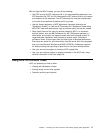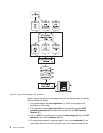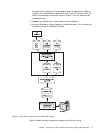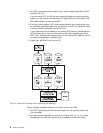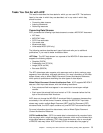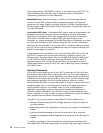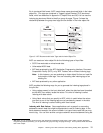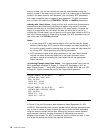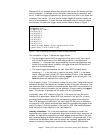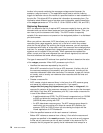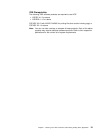
Because ACIF can process different data streams with various file formats (carriage
control characters, no carriage control characters, table-reference characters, and
so on), it requires
triggers
to determine an
anchor point
from which it can locate the
necessary index values. You may require multiple triggers to uniquely identify the
start of a new statement. To index the bank statements using the account number
and the date, first define the trigger values and the fields as shown in Figure 7:
trigger1=ᑍ,1,'1'
trigger2=,39,'PAGE 1'
field1=,18,3
field2=,22,2
field3=,25,4
field4=,3,1
field5=2,8,2
field6=2,11,2
field7=2,14,2
index1='Account Number',field1,field2,field3,field4
index2='Date',field5,field6,field7
Figure 7. ACIF Processing Parameters to Index the Bank Statement
The information in Figure 7 defines two trigger values:
The first trigger instructs ACIF to examine the first byte of every input record
until it finds the occurrence of an ANSI skip-to-channel 1 carriage control
character ('1'). Because each page created by this particular application may
contain this carriage control character, this trigger alone does not identify the
start of a new bank statement.
The second trigger accomplishes this task. When ACIF locates a record
containing a '1' in the first byte, it looks for the string ‘PAGE 1’ in that same
record, starting at byte (column) 39. If this condition is found, a new statement
exists, and ACIF uses the record containing trigger1 as the anchor point. The
field definitions are relative to this anchor point.
In the example ( Figure 7), the account number has four fields. These fields can be
defined as one field if the dashes are included as part of the index information. The
date has three fields to remove the forward slashes. After ACIF has extracted all of
the necessary indexing information for this statement, it begins looking for trigger1
again. This process is repeated until the entire print file is processed.
In summary, when ACIF indexes an input file, it first scans the input file to find
matches for its parameters. When ACIF finds matches in the input file, it inserts
structured fields immediately prior to the corresponding pages of the output file.
Also, ACIF places structured fields in the index object file that point to matches in
the output file. ACIF inserts structured fields before the corresponding pages of the
output file where it finds the matches in the input file. ACIF also places structured
fields that point to these matches in the index object file.
Indexing Limitations:
For a line-mode application that does not contain the
appropriate data values in the application output and for which literal values are not
suitable, the application program cannot insert tagging structured fields in the print
data, because tagging structured fields are not allowed in mixed-mode data. In the
case where the application data does not contain the necessary appropriate data
values for indexing, the application could add the index triggers. One possible
Chapter 1. Planning Your AFP Conversion and Indexing Facility (ACIF) Application 13



